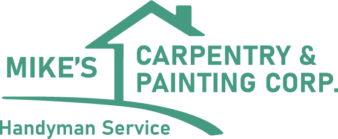CONSTRUCTION SAFETY MASTERCLASS 2023: THE ULTIMATE GUIDE TO BEST PRACTICES AND TOP SAFETY MEASURES
Introduction to Construction Safety
1.1 Importance of Safety in the Construction Industry: This section delves into the critical significance of prioritizing safety in the construction industry. It highlights the potential consequences of overlooking safety measures and emphasizes the value of a strong safety culture to protect workers, enhance productivity, and prevent accidents.
1.2 Construction Accident Statistics: Here, the guide presents factual data and statistics on construction accidents, injuries, and fatalities. By providing a clear picture of the risks involved, readers are made aware of the importance of implementing robust safety practices to reduce these incidents.
1.3 Responsibilities of the Construction Team: This section outlines the shared responsibilities of all members of the construction team, including workers, supervisors, contractors, and project managers. It emphasizes the collective effort required to maintain a safe work environment and prevent accidents.
Identification and Risk Assessment
2.1 Workplace Risk Analysis: In this segment, the guide explains the process of conducting a comprehensive risk analysis of the construction site. It covers identifying potential hazards, evaluating their severity, and implementing measures to mitigate risks.
2.2 Risk Assessment for Specific Tasks: Here, the focus is on task-specific risk assessments. It explains how to evaluate potential hazards related to specific construction tasks and activities. The guide provides step-by-step instructions on how to analyze risks and implement appropriate controls.
2.3 Measures to Control Risks: This section delves deeper into the implementation of risk control measures. It provides practical advice on selecting and implementing control strategies to minimize risks and enhance overall workplace safety.
Personal Protective Equipment (PPE)

3.1 Types of PPE and Proper Usage: This part of the guide offers detailed information about various types of personal protective equipment (PPE), such as hard hats, safety goggles, gloves, and respirators. It highlights the correct usage and importance of using the appropriate PPE for specific tasks.
3.2 Maintenance and Replacement of PPE: In this section, the guide emphasizes the significance of maintaining PPE in good condition. It outlines proper maintenance procedures and explains when and how to replace worn-out or damaged equipment to ensure continued protection.
3.3 Training in the Use of PPE: Here, the guide underscores the necessity of providing comprehensive training on the proper use of PPE. It discusses the importance of user competence and how regular training ensures workers understand how to use their PPE effectively.
Safety in the Use of Tools and Machinery
4.1 Proper Selection of Tools and Machinery: This section focuses on the importance of selecting the right tools and machinery for specific tasks. It covers the factors to consider when choosing equipment and emphasizes the role of proper equipment in ensuring worker safety.
4.2 Safe Handling of Hand and Power Tools: In this part, the guide delves into safe practices for handling hand and power tools. It discusses proper handling techniques, safety precautions, and the importance of regular tool inspections.
4.3 Precautions When Operating Heavy Machinery: Here, the focus is on the safe operation of heavy machinery. The guide covers the importance of proper training and certification for machinery operators and emphasizes adhering to safety protocols at all times.
Working at Heights

5.1 Fall Protection Systems: This section emphasizes the significance of fall protection systems when working at elevated heights. It discusses different fall protection options, such as harnesses, guardrails, and safety nets, to prevent injuries from falls.
5.2 Scaffolds and Elevated Platforms: Here, the guide provides detailed information on the safe use of scaffolds and elevated platforms. It covers proper assembly, inspection, and usage to ensure stability and prevent accidents.
5.3 Safe Use of Ladders: In this segment, the focus is on ladder safety. The guide discusses the correct selection, placement, and usage of ladders to prevent falls and injuries when working at heights.
Excavations and Trenching
6.1 Evaluation and Prevention of Trench Collapses: This section highlights the dangers associated with excavations and trenching. It provides guidelines for evaluating trench stability and the implementation of measures to prevent trench collapses.
6.2 Safety Measures in Excavation Work: Here, the guide offers specific safety measures for excavation work. It covers the importance of sloping, benching, and shoring to safeguard workers and prevent accidents.
6.3 Protection against Risks Associated with Excavations: In this part, the focus is on additional safety considerations when working in excavations. The guide addresses potential risks, such as hazardous atmospheres and utilities, and outlines protective measures.
Handling and Storing Materials
7.1 Safe Loading and Lifting Techniques: This section emphasizes the importance of safe loading and lifting procedures for materials. It covers proper techniques to prevent strain injuries and accidents during handling.
7.2 Proper Material Storage on Site: Here, the guide discusses the significance of proper material storage to prevent hazards. It covers organizing materials in designated areas and securing them to avoid potential risks.
7.3 Prevention of Injuries from Hazardous Materials: In this segment, the focus is on the safe handling of hazardous materials. The guide provides guidelines for handling, storing, and disposing of hazardous substances to protect workers and the environment.
Fire Prevention and Electrical Risk Control
8.1 Measures to Prevent Fires on Site: This section covers fire prevention measures on construction sites. It provides guidance on fire prevention strategies, such as proper storage of flammable materials and maintaining clear fire escape routes.
8.2 Electrical Safety and Prevention of Electrical Hazards: Here, the guide addresses electrical safety, covering precautions for electrical systems, equipment, and usage. It emphasizes the importance of electrical training and awareness to prevent electrical hazards.
8.3 Safe Handling of Flammable Substances: In this part, the focus is on the safe handling of flammable substances. The guide provides guidelines for storing, using, and disposing of flammable materials to prevent fire incidents.
Emergency Plans and First Aid
9.1 Developing Emergency Plans: This section discusses the importance of having well-defined emergency plans in place. It covers the development of emergency response procedures, evacuation routes, and communication protocols.
9.2 First Aid and CPR Training: Here, the guide emphasizes the significance of providing first aid and CPR training to employees. It explains how prompt and proper first aid can save lives in critical situations.
9.3 Procedures for Emergency Situations: In this segment, the focus is on specific emergency procedures for various scenarios. The guide provides clear instructions on how to respond to different types of emergencies effectively.
Safety Culture in the Workplace
10.1 Promoting a Positive Safety Culture: This section discusses the importance of fostering a positive safety culture within the construction team. It emphasizes the role of leadership and employee engagement in promoting a safe work environment.
10.2 Involving Workers in Safety Practices: Here, the guide underscores the significance of involving workers in safety practices. It covers the benefits of employee participation in identifying hazards, suggesting improvements, and implementing safety measures.
10.3 Review and Continuous Improvement of Safety Measures: In this part, the focus is on continuous improvement in safety practices. The guide discusses the importance of regular safety reviews, learning from incidents, and updating safety protocols to enhance workplace safety.
The guide is designed to be a comprehensive resource that covers a wide range of construction safety topics and best practices



